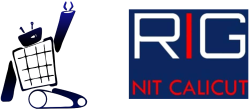In order to select motor for a robot or a machine, several key questions must be asked
1. How fast the motor is?
Ans: If the end effector part of the machine/ robot is directly attached to the motor, then the desired speed is the required speed. Moreover, by using gears or pulleys or any other power transmission device, the speed can be manipulated.
Any DC Motor can be characterized by the speed-torque graph.
2. How to know about the power required in the motor?
Ans: The total force required to move or actuate the machine or robot can be calculated using force equilibrium equations. This force, when multiplied by the desired angular or spin velocity and arm length, gives the power required. The maximum power required can be calculated at the half of its no-load current and half of its stall torque.
3. At what voltage will the motor operate?
Ans: The power required is also a product of current required and operating voltage. 3V, 6V, 12V and 24V are some of the common preferred voltages for DC motors. If a voltage lower than the voltage listen in the data sheet is applied to a motor, the torque will not overcome the internal friction – mostly from the brushes. Also, if a voltage higher than what the motor can support is applied, it may heat up and get damaged.
4. Can a motor work all the time?
Ans: It is related to the duty cycle of the motor. For low duty cycle, a brushed DC Motor can be used whereas for heavy duty cycles, brushless DC Motors are used.
http://www.rignitc.com/motor-specification/
